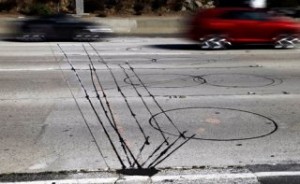 For those engaged in “intelligent transportation” campaigns to improve highway safety, reduce air pollution, and save us from ever-increasing traffic congestion, it ain’t all about new. Vehicle-to-vehicle (V2V) communications, vehicle-to-grid (V2G) power, telematics, and connected car technologies, are capturing imaginations and gaining broad support. Older, existing intelligent transportation systems have been in place for years and will continue to play their part – creating many problems and opportunities. Examples of older technologies that most of have seen include in-road sensors, cameras, above-road detectors, and message boards telling us how many minutes it will take to connect to the next highway or airport. Some of it has been problematic and wearing thin; intersection cameras have been getting stalled out after a few lawsuits. In-road sensors are not delivering what they used to. Government-funded traffic management systems are facing a slew of problems, and contracts are starting to get outsourced more to private enterprise.
For those engaged in “intelligent transportation” campaigns to improve highway safety, reduce air pollution, and save us from ever-increasing traffic congestion, it ain’t all about new. Vehicle-to-vehicle (V2V) communications, vehicle-to-grid (V2G) power, telematics, and connected car technologies, are capturing imaginations and gaining broad support. Older, existing intelligent transportation systems have been in place for years and will continue to play their part – creating many problems and opportunities. Examples of older technologies that most of have seen include in-road sensors, cameras, above-road detectors, and message boards telling us how many minutes it will take to connect to the next highway or airport. Some of it has been problematic and wearing thin; intersection cameras have been getting stalled out after a few lawsuits. In-road sensors are not delivering what they used to. Government-funded traffic management systems are facing a slew of problems, and contracts are starting to get outsourced more to private enterprise.
California is losing its highway sensors – 34% of the 27,000 sensors (9,000) are offline, up from 26% in 2009. These sensors have been an integral part of the state’s intelligent transportation system that was designed years ago to detect traffic congestion and send out crews to clear out a collision. Losing a third of the sensors has not been a good sign for intelligent transportation goals. ‘‘[It] is not an acceptable number, really,’’ California’s top transportation official, Brian Kelly, told The Boston Globe.
These have been built into roads through in-road sensors called “loops,” because of their shape. Some of the loops were cut during construction, some were yanked out by copper thieves, and many have died of old age. These blind spots show up as strings of gray on the colored freeway maps overseeing Los Angeles and Ventura counties.
There’s been limited highway space and funding for new lanes, so loss of traffic sensors have failed to produce the real-time traffic maps that are growing in demand. Private traffic mapping services are being relied upon by drivers. The California Department of Transportation gives away data from its loop sensors to Google and other companies; the department also pays Google for a traffic map that incorporates its own data as well as information the company gets from vehicles and cellphones whose owners have agreed to share location data.
California and other states are looking at wide range of real-time traffic data offerings. For example, Michigan’s transportation department pays Inrix Inc. about $400,000 annually for data to populate its Mi Drive map. Inrix said the company has contracts with 25 state transportation departments. Utah estimated about 20% of its highway loops don’t work; the city of Austin, Texas, says that 75% of the loops in the area aren’t working anymore. State highway and safety agencies will likely continue to watch for technology innovations and drum up the funding to make the best investments.



